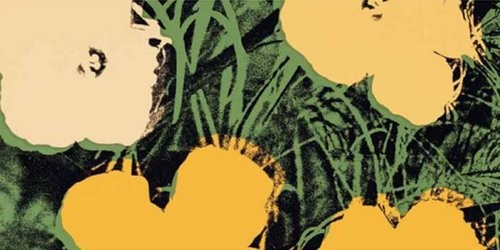Warhol After Munch
04 Jun - 12 Sep 2010
WARHOL AFTER MUNCH
4 June – 12 September
A surprising, perhaps even startling meeting between two of the giants of modern art: Andy Warhol, master of the surface, and Edvard Munch, periscope from the depths of the soul. Louisiana's summer exhibition of Warhol’s “Munch pictures” together with several of Munch's original prints is a museum experience not to be missed.
It may seem the strangest choice: placing Edvard Munch (1863-1944), whom most people see as the painter of the innermost soul, alongside Andy Warhol (1928-1987), who is normally labelled as the apostle of the superficial. But there are three good reasons to do so.
In the first place, in 1984 Warhol made a long series of prints that are versions of four main subjects by Munch – the iconic The Scream, Madonna, Self-Portrait and The Brooch.Eva Mudocci. Secondly, Warhol and Munch both worked intensively with the print medium, with the concepts of quantity and repetition as guidelines. And thirdly, the exhibition Warhol After Munch aims to correct the standard image of the two by showing that Warhol is less superficial than he is often perceived, and Munch correspondingly more superficial – with the footnote that the concept ‘superficial’ is by no means meant negatively, but is concerned with the artists’ interest in the communicative power of art.
The exhibition Warhol After Munch consists of 30 of Warhol’s unique silk-screen prints and 17 of Munch’s original prints, enabling the viewer to follow the transformation of Munch’s subjects.
Also on view are 37 photographs, selfportraits of Andy Warhol, kindly lent by The Andy Warhol Museum in Pittsburgh. As a background for this collection of selfportraits is a wallpaper, designed by Warhol himself, using yet another selfportrait as motif and thus underlining the exhibition theme of repition and variation.
The exhibition is rounded off with works from Louisiana's Warhol collection, which is second to none in Scandinavia. Among these you will find iconic pieces such as Marilyn Monroe, Flowers and Close Cover Before Striking.
4 June – 12 September
A surprising, perhaps even startling meeting between two of the giants of modern art: Andy Warhol, master of the surface, and Edvard Munch, periscope from the depths of the soul. Louisiana's summer exhibition of Warhol’s “Munch pictures” together with several of Munch's original prints is a museum experience not to be missed.
It may seem the strangest choice: placing Edvard Munch (1863-1944), whom most people see as the painter of the innermost soul, alongside Andy Warhol (1928-1987), who is normally labelled as the apostle of the superficial. But there are three good reasons to do so.
In the first place, in 1984 Warhol made a long series of prints that are versions of four main subjects by Munch – the iconic The Scream, Madonna, Self-Portrait and The Brooch.Eva Mudocci. Secondly, Warhol and Munch both worked intensively with the print medium, with the concepts of quantity and repetition as guidelines. And thirdly, the exhibition Warhol After Munch aims to correct the standard image of the two by showing that Warhol is less superficial than he is often perceived, and Munch correspondingly more superficial – with the footnote that the concept ‘superficial’ is by no means meant negatively, but is concerned with the artists’ interest in the communicative power of art.
The exhibition Warhol After Munch consists of 30 of Warhol’s unique silk-screen prints and 17 of Munch’s original prints, enabling the viewer to follow the transformation of Munch’s subjects.
Also on view are 37 photographs, selfportraits of Andy Warhol, kindly lent by The Andy Warhol Museum in Pittsburgh. As a background for this collection of selfportraits is a wallpaper, designed by Warhol himself, using yet another selfportrait as motif and thus underlining the exhibition theme of repition and variation.
The exhibition is rounded off with works from Louisiana's Warhol collection, which is second to none in Scandinavia. Among these you will find iconic pieces such as Marilyn Monroe, Flowers and Close Cover Before Striking.

